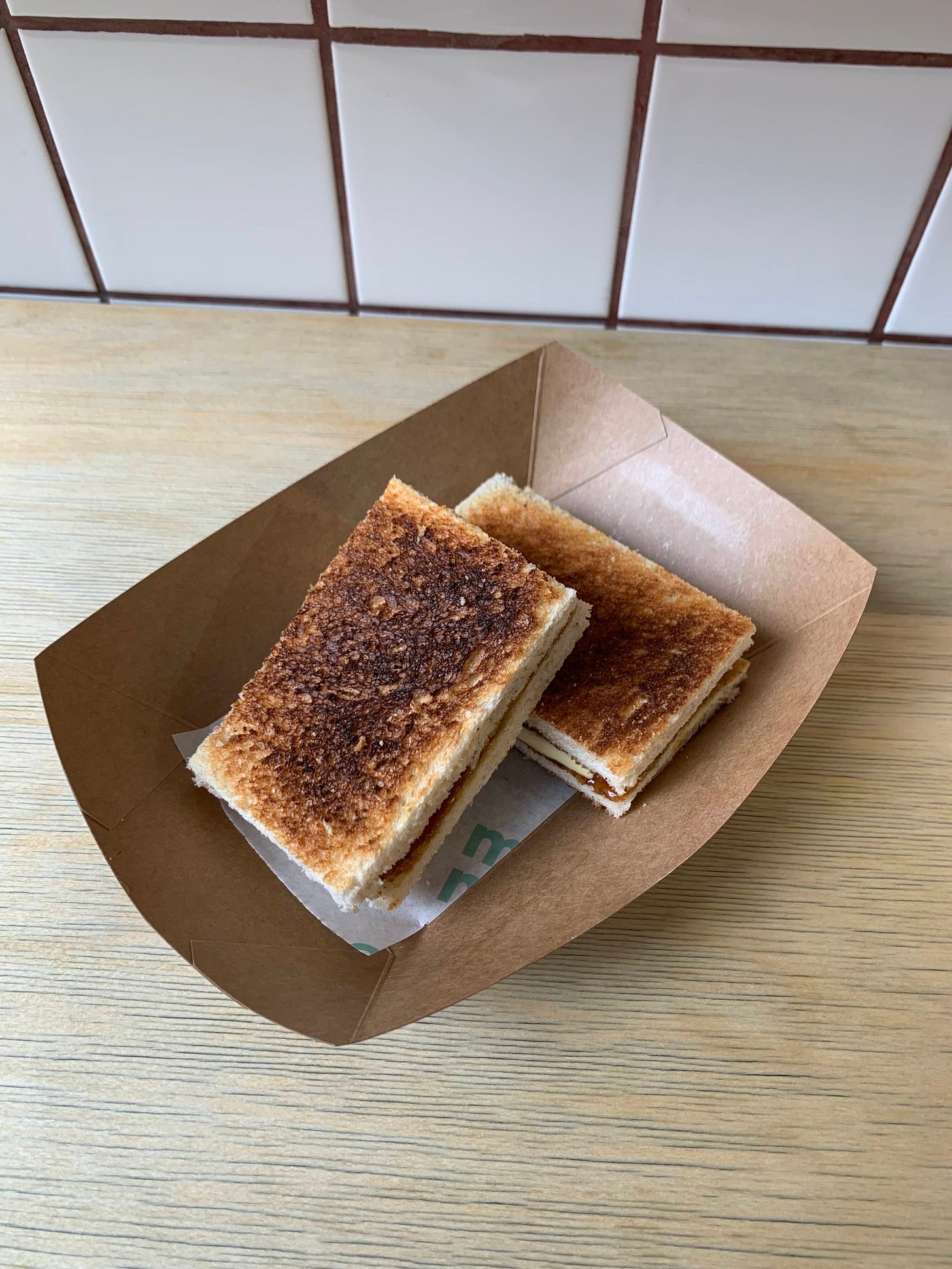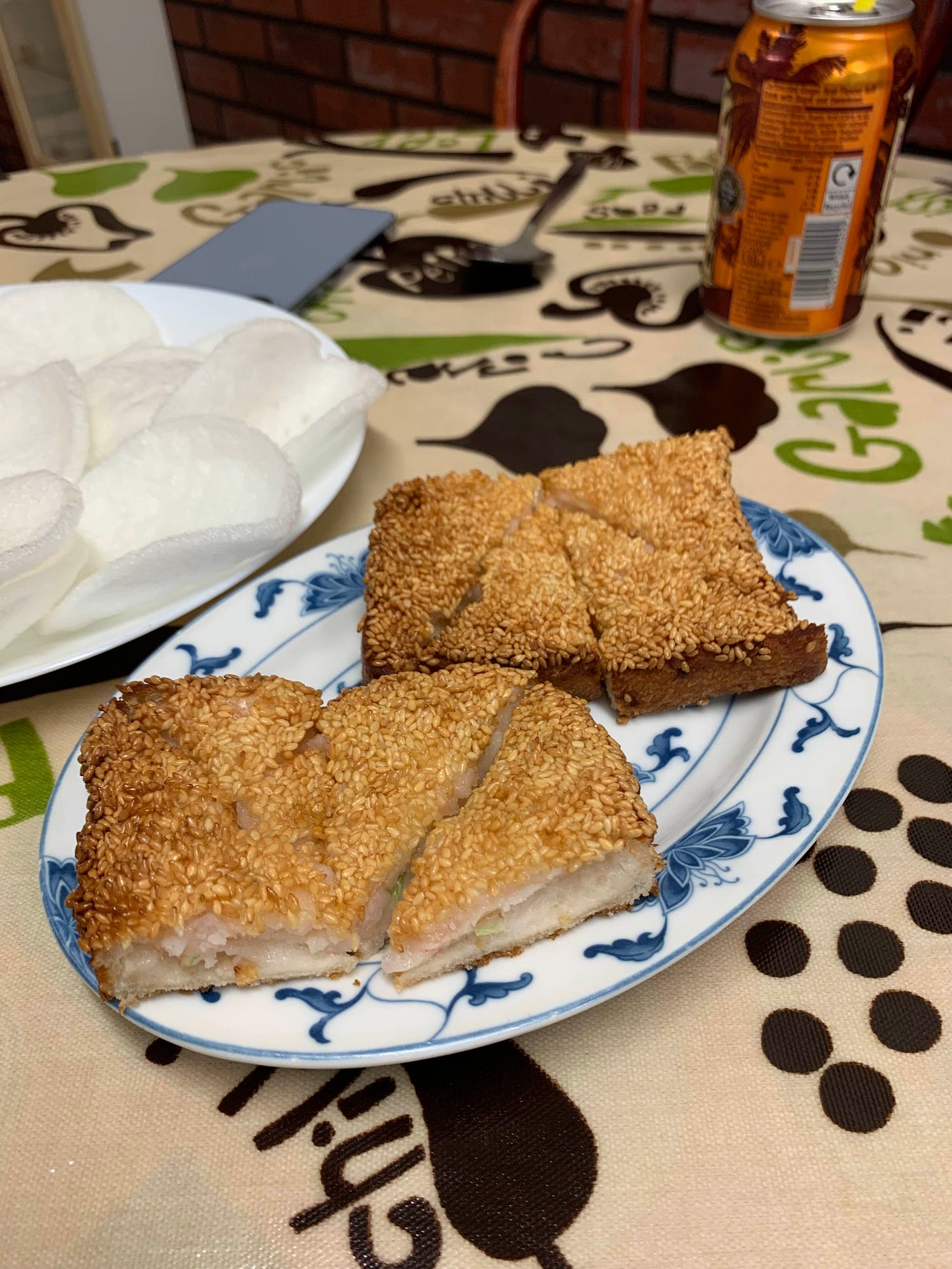Far Beyond These Things
The purpose and repurposes of white bread in all its ornate forms. By Isaac Rangaswami.
This article is part of Give Us This Day: A Vittles London Bakery Project. To read the rest of the essays and guides in this project, please click here.
From tomorrow, look out for the history of London’s Caribbean bakeries, London’s biggest sandwich moments since 1762 and, for subscribers only, the definitive two-part London bakery guide on Friday!
To read about the 50 best sandwiches in London, published last Friday, visit the link below.
The 50 Best Sandwiches in London
This guide is part of Give Us This Day: A Vittles London Bakery Project. To read the rest of the essays and features in this project, please click here.
Far Beyond These Things
The purpose and repurposes of white bread in all its ornate forms. Words and photographs by Isaac Rangaswami.
Sliced bread existed before it was officially invented, it just didn’t have a name. This is because for thousands of years cutting bread into pieces was unremarkable, until people figured out a way to do it in a uniform, mass-produced way. A juddering steel contraption marked this shift in 1928, when it chewed through America’s first machine-sliced loaves. Several decades later, in 1961, British scientists mechanised bread production once again, unleashing the Chorleywood bread process on the world. The new method meant we could make bread more efficiently and economically, but the end product wasn’t really bread at all.
Around that time, other breadmaking practices began arriving in Britain, many of them from countries the UK had colonised in the past. These diaspora breads – naan and pita among them – started to coexist with the ones that were here already, as supermarket shelves increasingly groaned with unnaturally springy, factory-made loaves. Britain’s native baking traditions dwindled, but didn’t disappear entirely.
London is Britain’s most culinary diverse city, yet for every miche, roti, baozi, challah, injera, flatbread and focaccia, there are at least as many loaves of plain white. While some of these are Chorleywood processed, there are also cooks and bakers who make higher quality white bread from scratch – whether it’s tin loaf, Agege bread or hard dough. Some of these sliced whites are ideal as a component part of a great sandwich, but I am as interested in how pre-sliced, factory-made bread is manipulated until it morphs into actual food: fried bread, bread pakora, prawn and kaya toasts, francesinhas, all concoctions that are the very definition of making something out of nothing.
White Bread, As It Is
If you want sliced white but you don’t want sourdough or a mass-produced loaf, you still have options. These include heritage spots such as Ayres in Nunhead, Raab’s in Islington, Dunn’s in Muswell Hill and H Hirst & Sons in Lewisham, improbable surviving village bakeries inside the M25. Here locals queue for jam doughnuts and flaky sausage rolls like they’ve done for centuries, as well as fuller, realer loaves of flour-dusted white bread.
But it’s London’s Caribbean bakeries where white bread really takes pride of place. Shokupan may be trendy, and Agege bread is becoming more common in south London newsagents, but hard dough (hardo) bread has a particularly deep history in the capital. Like brioche and American supermarket bread, hardo tends to be sweeter. It is dense too. And if you buy it from a Caribbean bakery, it has been made by hand rather than by machines.
Camberwell’s The Bread of Life is one of London’s many time-honoured Caribbean breadmakers, some of which are now among the oldest bakeries in the city. Buy a serving of whatever dark, bone-rich soup is on that day, alongside a weighty oblong of bread to take home. Tightly packed yet soft, this is the Platonic ideal of a sandwich loaf. I like to have it buttered and open-faced, with a slice of cheddar.
Fried Slice
Fried bread began to fade away in London a while back, not long after Ceefax, doorstep milk delivery and boxy three-wheeled cars. Even in caffs it rarely comes as standard in a fry-up these days, though most proprietors will quite happily toss a slice into some hot oil for you if you ask.
E Pellicci in Bethnal Green is one such place. It has retained its historical atmosphere and convivial charm (despite becoming TikTok famous and having its own celebrity podcast.) The menu offers an optional fried slice with its flagship fry-ups, which I find heartening because it means loads of tourists end up eating fried bread each day. If you don’t assemble scaffolding for a living you probably don’t need the calories, but that doesn’t mean you should feel guilty about enjoying the glistening cuboid.
As London’s native fried slice tradition has receded slightly from view, one of its south Asian relatives has taken a deeper hold. This is the bread pakora, a vividly colourful example of which you can find at Gujarat Junction in Forest Gate.
Kaya Toast
Kaya toast contrasts with Western conventions of toast by spreading the jam first, presenting the butter as thick, cool slabs and layering it into a sandwich. The butter is a long way from melting when it arrives, which creates a pleasing mix of textures and temperatures.
With the temporary closure of Shoreditch’s Kopichadim, Mei Mei in Borough Market may currently be the only place to buy kaya toast in London. I’ve enjoyed it there, but it’s more economical to prepare at home, which I’ve done using a jar of pandan kaya I bought at Raya, a Southeast Asian grocery store on the nearby Stoney Street. This smooth, willow-green variant of the coconut spread is floral and earthy, tasting something between vanilla, Earl Grey and seaweed.
Prawn Toast
Thanks to some clever branding, most people don’t think about prawn toast as it really is: sesame-prawn fried bread. Or maybe they do, but get it anyway because it tastes so good. You could order this dish from almost any Chinese takeaway, and enjoy it on your sofa, but there’s something particularly fun about getting it to eat in.
Along with Uncle Wrinkle’s artful rendition of the dish – chunky and crispy, yet loaded with soft pink mush – the prawn toast at Wong Kei is equal parts juicy and brittle. These are both contorted, sesame-speckled things, more like quarter-circles than triangles. If you examine them closely, the bread doesn’t actually look as if it has been hand-filled with minced prawns. To me, it looks like it has been genetically reprogrammed to become something far better, as if it was never sliced white bread at all.
Welsh Rarebit
I like St. JOHN’s Welsh rarebit because it allows you to eat at a famous London restaurant for £10.50, so long as that’s all you get. As with the place’s historic Clerkenwell environs, this dish’s lagomorphic-sounding name is mysteriously archaic. It isn’t Welsh, nor does it have anything to do with rabbits; in fact nobody alive knows how it got its name.
At St. JOHN, the cayenne, Guinness and cheddar sauce is thick, adhering to the bread like a spray-on dress. The serrated knife you’re given comes in handy, as does a bottle of red Coke, along with a sharp, watercress-heavy salad and liberal application of the also-provided Lea & Perrins.
Francesinha
I first came across the word ‘francesinha’ when somebody mistook my picture of a large dish of lasagne for one. Googling it later, I was thrilled to discover that such an absurdly rich concoction could exist, where ham, steak, sausage and melted cheese are layered between slices of toast before being submerged in a piquant, gravy-like bath and finished with a fried egg.
As with several entries on this list, you could technically call a francesinha a sandwich, but like them it is also much more than that. This is mainly because it is so drowning in sauce that you have to eat it with a knife and fork. Somewhere along the road to becoming a sandwich it took a reckless left turn; it is closer in form, ambition and ludicrousness to a Tournedos Rossini.
London is blessed with plenty of Portuguese spots, but they don’t all serve francesinha – so you have to look harder to find the places that do. They do a good one at O Cantinho in Stockwell, which I enjoy because you can taste the booze in the sauce – recipes fortify it with beer and often port and whisky too – something that helps cut through all the cheesy, porky indulgence. I once worked through it slowly by myself, with the help of a beaker of hot sauce.
Bread and Butter Pudding
Stale bread becomes bread and butter pudding with the quiet enchantment of custard, sultanas and tender loving care. As a result, its nostalgic powers are unrivalled: if you ever had this dessert in a school canteen, your first spoonful is likely to take you back there immediately.
For a uniquely London experience, try the ones at Castle’s Pie & Mash in Camden and Regency Cafe in Pimlico – both old, cafeteria-like spaces. At the Regency, the dish repurposes the pre-buttered doorstep slices they stack up in plastic boxes and issue with each breakfast, which I think is a very clever way to avoid waste.
Hong Kong-style French toast
Hong Kong-style French toast is the world’s most indulgent white bread creation – even more so than francesinha. The sheer volume of peanut butter plays a part here, as does the fact it’s fried, but it’s the butter and syrup topping that really pushes the dish into wild excess. If you haven’t had one before, the best comparison I can think of is a double-decker battered-Mars-bar sundae.
The first time I tried Hong Kong-style French toast was at Wamimichi Noodle Bar in Hendon, one of a number of spots opened up by London’s new Hongkonger communities. The dish has a squidgy coat, not unlike its Western cousin eggy bread. But as with the best white-bread dishes, Hong Kong-style French toast’s mass-produced origins are barely perceptible. This is because human creativity and resourcefulness, as well as the small dose of insanity behind all great ideas, have transformed it into something totally new.
Credits
Isaac Rangaswami is a writer based in London. He runs the Instagram account @caffs_not_cafes.
This piece was edited by Adam Coghlan and Jonathan Nunn, and sub-edited by Sophie Whitehead.















Mozzarella in Carrozza another awesome use for white bread 🤤
The humble white bread is creatively transformed into so many different dishes depending on who’s working with it!